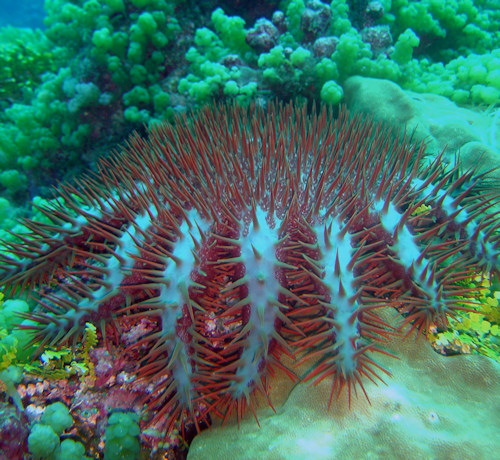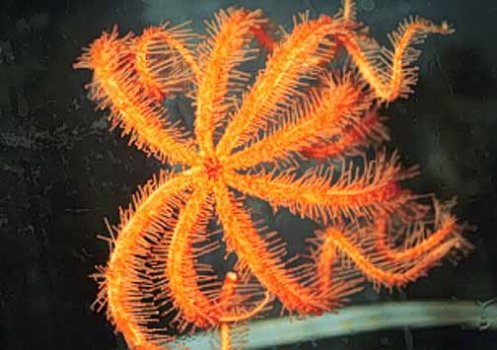Starfish Ecology
The well-known species of starfish tend to be generalist
predators, eating pretty much anything that's too slow to escape. Many
prey heavily on bivalves (mussels, clams, and oysters). Some species
are more specialized, such as Henricia, which feeds
on sponges, or the infamous crown-of-thorns (Acanthaster planci)
which feeds on coral. Some groups, like the Brisingids, are adapted for
suspension feeding (trapping and eating plankton suspended in the
water).
Starfish aren't a major prey item for any species, probably
because their highly calcified skin is difficult to eat and not
terribly nutritious. However, various species of crustaceans and fish
are known to eat them. I don't think any human culture eats starfish,
which is really just as well.
 |
Asterias eating mussels. Starfish
that eat bivalves can use their tube feet to hang on to the shell while
pulling the two halves of the shell apart. As soon as a gap opens, even
a small one, they extend their stomach into the shell and digest the
mussel inside!
Many starfish share this ability to extend ("evert")
their stomach, whether for eating bivalves or in less specialized ways
as an alternative to swallowing their food.
|
Acanthaster planci,
or the crown-of-thorns starfish, is well known for eating corals. Under
normal circumstances this is simply part of the coral reef food-web,
but occasionally huge outbreaks of starfish wreak havok on large
regions of reef.
(Picture from NOAA.) |
 |
 |
The Brisingid sea stars are adapted
for suspension feeding. They have a minimum of six rays, all long and
thin, with extremely long tube feet, seen extended here. They live
exclusively in the deep sea. |
Last
updated May 10, 2000.



